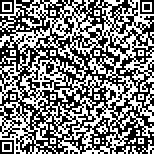下载中心
优秀审稿专家
优秀论文
相关链接
摘要

多源遥感数据综合应用是遥感发展的必然趋势,统一的遥感数据空间尺度分级模型是多源数据集成与综合应用的基础。虽然已有多种空间尺度分级模型,但很多主流模型并非出于分尺度综合应用目的,缺乏客观的比较和评价。国家基本比例尺系统作为经过论证、中国应用面最广泛、接受度最高的一种尺度分级系统,是以应用为导向的遥感数据空间尺度分级模型的最优参照系。从不同视觉精度下国家基本比例尺对图像空间分辨率的需求出发,比较各空间尺度分级模型的层级分辨率与需求分辨率的匹配情况,包括OGC Well Known Scale Set的GlobalCRS84Pixel和GoogleMapsCompatible,以及NASA WorldWind、Google Map、百度地图、天地图等软件平台采用的层级格网系统,以及“五层十五级”遥感数据组织模型,通过对数据信息冗余度的分析,对各个模型进行了评价。结果表明,在高视觉精度应用需求下,“五层十五级”模型与基本比例尺精度要求具有较明显的匹配优势,其次为OGC GoogleMapsCompatible模型和天地图模型,其余模型平均数据冗余倍数在2倍左右;在低视觉精度应用需求下,“五层十五级”模型平均数据冗余度仍为最低,其次为Google Map模型,其余模型平均数据冗余倍数都在2倍以上。
The progress of Internet and remote sensing technologies has increased the amount of available remote sensing satellite resources. Thus, extraction ability of remote sensing information becomes increasingly strong, and social application need for such data becomes increasingly diverse. Comprehensive application of multi-source remote sensing data has become an inevitable trend. Given that remote sensing data are spatiotemporal data, their comprehensive application needs to be carried out in a certain spatial scale. A unified spatial scale set for remote sensing data is a basic requirement for the integration and comprehensive application of multi-source data. Many popular spatial scale sets are available, and each of them exhibits its own advantages and disadvantages. However, none of them is currently applied as a standard. The lack of a standard spatial scale set restricts the comprehensive application of multi-source remote sensing data. Thus, popular spatial scale sets should be evaluated to establish or optimize a reasonable spatial scale set as a standard.
Information density depends on the amount of information in a unit area. Thus, the spatial resolution of remote sensing images is an effective way of expressing the information density of remote sensing data. Map scale refers to the ratio of the distance on the map to that on the field, which imposes strong information requirements. A large map scale requires high information density, which indicates high spatial resolution. High image spatial resolution is necessary to obtain considerable surface details from a large map scale. If the image spatial resolution is insufficiently high, then the map will present inferior quality or will even be unavailable for use. However, high image space resolution is not always ideal for a specific scale. Excessively high resolution data indicate redundant data, which require high computational cost and storage and network resource. All these factors may affect the data display.The national primary scale is a widely used mapping scale grading system and is a perfect reference system to evaluate an optimal spatial scale set for remote sensing data application. Apart from map scale, visual precision is also an important index that affects the spatial resolution requirements. Visual precision requirements to remote sensing image application involve two levels. One is high visual precision requirement, which is suitable for application types of quantitative calculation, scientific analysis, and human-computer interaction. The other is low visual precision requirement, which is suitable for remote sensing data exhibition in long distance, such as image displays in a large screen and a wall map.
In this study, the spatial resolutions required by the national primary scale in two visual precision levels were analyzed. Then, the optimal spatial resolution scale of current popular spatial scale sets was built by matching the requirements. The popular spatial scale sets included OGC popular scale sets "GlobalCRS84Pixel" and "GoogleMapsCompatible", the grid system of NASA WorldWind, Google Map, Baidu Map, Map World, and the "five-layer fifteen-level" remote sensing data organization model. Thereafter, the data redundancy rates of these popular spatial scale sets were calculated and compared from the optimal resolutions to the required spatial resolutions of the national primary scale in two visual precision levels.
Results show that, compared with other popular spatial scale sets, the "five-layer fifteen-level" remote sensing data organization model best matches the requirements of the national primary scale. In particular, the model presents the lowest average redundancy rates in the two visual precision levels among others. Therefore, the "five-layer fifteen-level" remote sensing data organization model is a suitable standard spatial scale set for the multi-scale comprehensive application of multi-source remote sensing data.

